
When the Soviet Union collapsed, the U.S. power elite saw an opportunity to take over the oil-rich region considered key to world domination.
The consequences were horrendous for the people, who have now begun to mobilize—with support from China and Russia—against the U.S. empire.
“Who rules the heartland commands the World-Island;
Halford John Mackinder (1919)
Who rules the World-Island commands the world.”
The end of the Union of Soviet Socialist Republics (USSR) in December 1991 left a political vacuum in Central Asia. When Moscow imploded, Central Asia fragmented and in the confusion the United States sneaked in. By doing so Washington was following in the footsteps of Genghis Khan, Tamerlane, and Adolf Hitler.
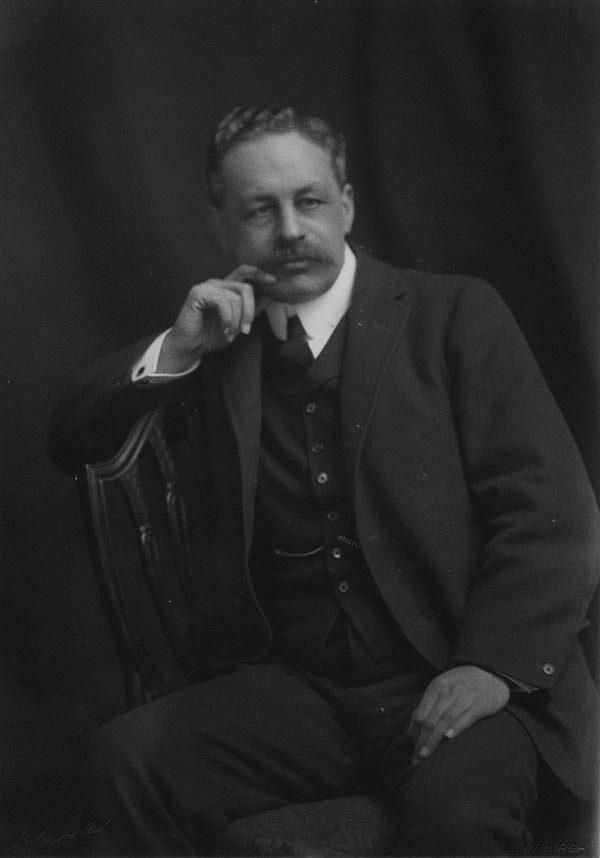
It was an unexpected unipolar moment. The U.S. reacted instinctively. It did not have the hordes of Genghis Khan nor was it positioned in the middle of “the heartland” like Tamerlane. Neither did it have a plan like Hitler’s Operation Barbarossa. But it did have the CIA and the dark skills it had honed in Southeast Asia, Latin America and Afghanistan. But was it enough to tame Central Asia?
The sudden collapse of the USSR was a unique opportunity for U.S. imperialism. It was a chance to test the greatest theory of geopolitics: Mackinder’s heartland theory—whoever rules Central Asia, rules Eurasia and therefore rules the world.
According to this logic, the keys to the world are the Black Sea, the Caspian Sea, the Celestial Mountains and the fabled Silk Road. It is not just the natural resources which these seas, deserts and mountains contain. It is their strategic locations—just south of Russia, just west of China and just north of Iran.
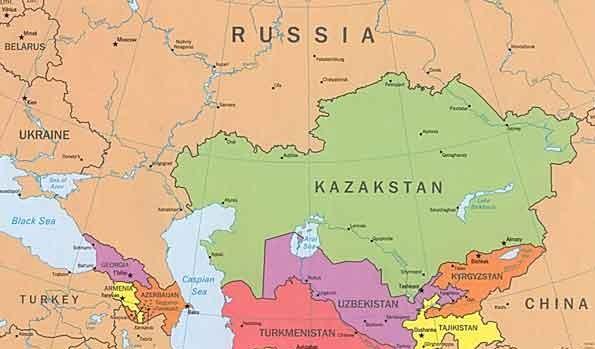
Of course, the U.S. could not and did not resist the opportunity to enter the backyard of this mighty triumvirate—Russia, China and Iran.
And the “born again” nation states which call Central Asia home? Georgia, Armenia, Azerbaijan, Turkmenistan, Kazakhstan, Uzbekistan, Tajikistan and Kyrgyzstan—what about them? According to the theory, they are just pawns on an imperial chessboard and, if need be, cannon fodder.
Full Spectrum Dominance
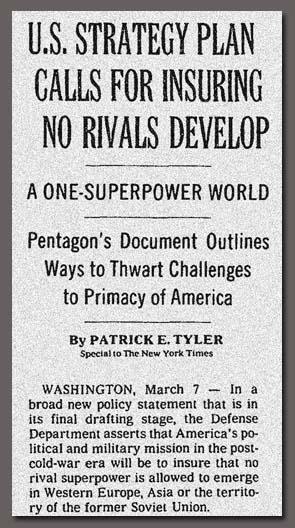
U.S. strategy after the death of the USSR was simple: Block the rise of any nation which may challenge its global primacy. This implied another strategy: U.S. control of the earth’s energy resources.
U.S. strategists were not coy about this imperial vision after 1991. It was there for all to see in Pentagon documents, bestselling books, think tank statements and energy policies.
The Pentagon’s 1992 “U.S. Defense Planning Guidance” paper wanted to “prevent any hostile power from dominating a region whose resources would, under consolidated control, be sufficient to generate global power.”[1]
Its authors were Dick Cheney, Paul Wolfowitz and Zalmay Khalilzad—the men who eventually orchestrated the invasions and occupations of Afghanistan (2001) and Iraq (2003).
In 1997 these men were outside of government but continued to push their aggressive imperial agenda with the Project for a New American Century (PNAC). In its Statement of Principles they declared that the U.S. “faced an opportunity … to shape a new century favorable to American … interests.”[2]
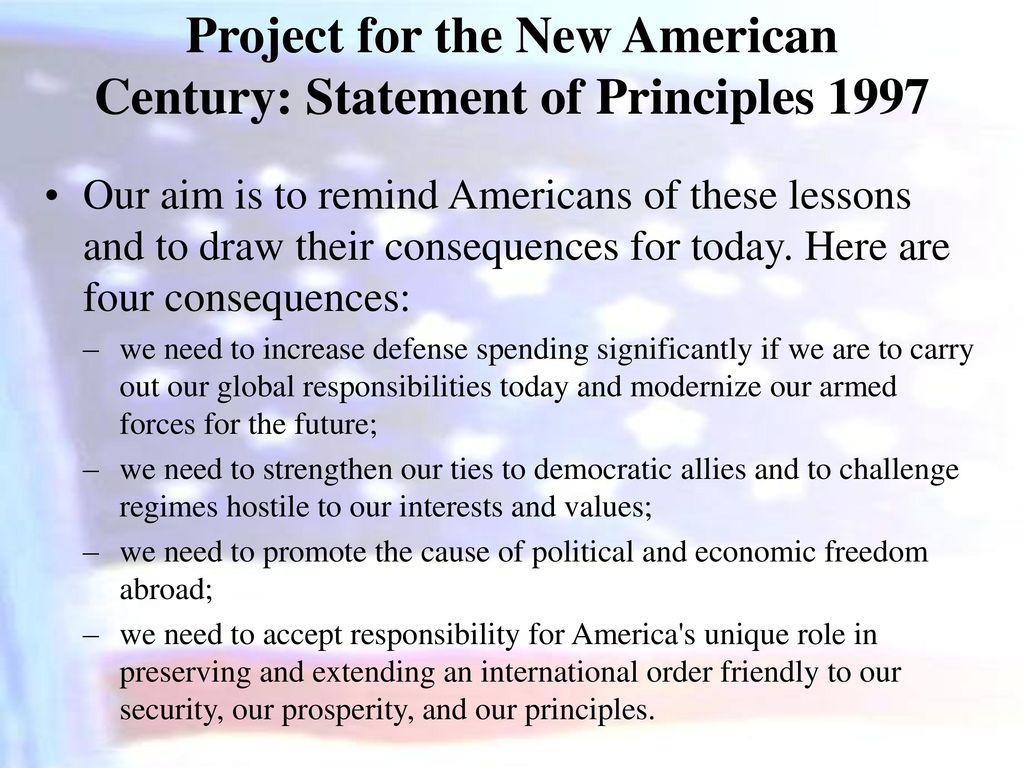
Also in 1997, the book The Grand Chessboard was published.
Its author was former National Security Adviser Zbigniew Brzezinski—the man who, in 1979 initiated Islamic jihad in Afghanistan.
In the book he outlined how the U.S. should manage Eurasia and, in particular, Central Asia. He stated: “It is imperative that no Eurasian challenger emerges, capable of dominating Eurasia and thus also of challenging America.”[3]
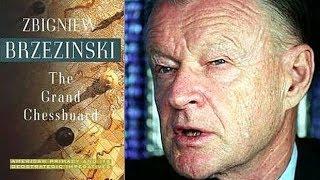
Oil and Gas
The gist of these declarations and recommendations were eventually summed up in President George W. Bush’s 2001 National Energy Policy (NEP)—which was made public four months before 9/11. It was shaped by the ubiquitous Dick Cheney (then Vice President) and America’s all-powerful oil lobby. It has been succinctly described as America’s plan to “procure the rest of the world’s oil.”[4]
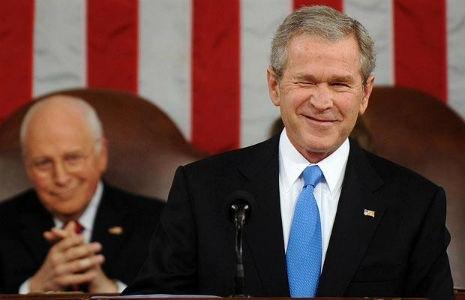
Central Asia, it can be argued, was the whole point of Bush’s NEP, since the Caspian Sea Basin at the time was experiencing an extraordinary oil rush. It was seen as the new Persian Gulf—the new Middle East. And so was earmarked for U.S. and Western exploitation.
In the early 1990s experts believed that the Caspian contained two-thirds of the world’s oil reserves and a similar proportion of the world’s gas reserves. “In May of 1997, the U.S. State Department … stated that potential, including undiscovered and possible, reserves could be as much as 200 billion barrels of oil and nearly 8 trillion cubic meters of gas.”[5]
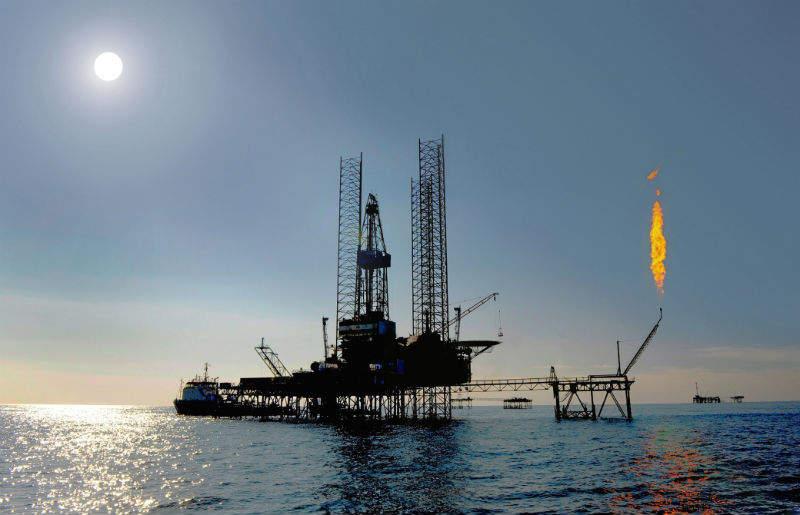
If the U.S. wanted to guarantee its future energy requirements and, at the same time, contain potential Eurasian rivals—controlling the oil and gas of Central Asia was a prerequisite.
The problem, however, was that the Caspian Sea was a “landlocked lake” and was already connected by pipelines to Russia—a legacy of the Soviet era. Moscow “owned the lake.” By the mid 1990s, if not earlier, the U.S. solution was “straightforward”—new pipelines which avoided Russia and, for good measure, Iran.
New anti-Russian pipelines in Central Asia, however, required that ex-Soviet Republics had to be made into anti-Russian Republics—in particular Azerbaijan—the new country on the Caspian, with the famous old oil town: Baku.
Azerbaijan’s South Caucasus neighbor, Georgia, also had to be turned against Moscow—since the easiest anti-Russian route for a pipeline out of Baku was through Georgia and into Turkey. Once in Turkey the pipeline would be in the hands of America’s North Atlantic alliance—as opposed to any potential Central Asian alliance.
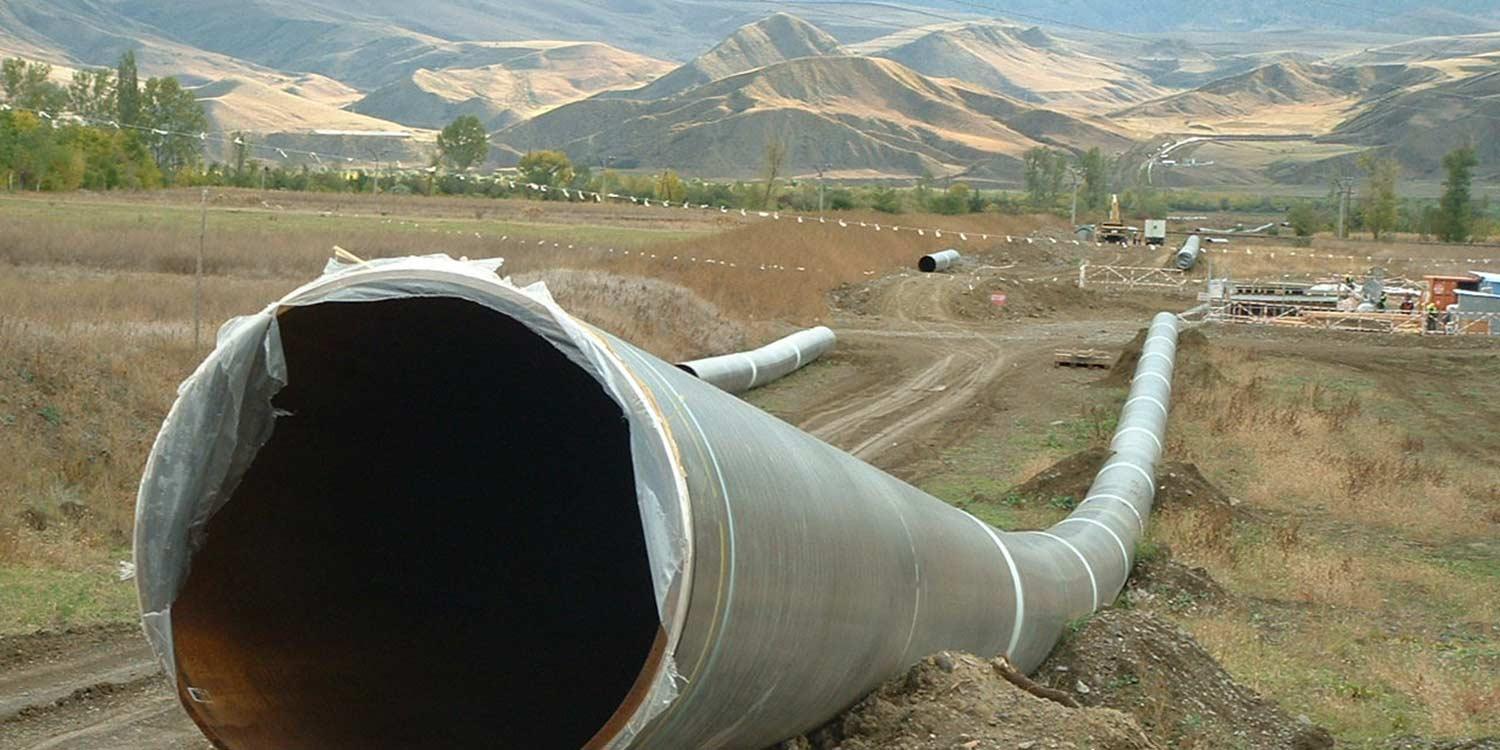
The Jihadis
America’s professional imperialists were onto this new mission—this new anti-Russian crusade—before any formal strategy was up and running. In Central Asia the transition from the Old Cold War to the New Cold War was immediate for America’s covert warriors. Being instinctive and proactive, after all, is their modus operandi.
President Jimmy Carter’s National Security Adviser, Zbigniew Brzezinski, for example, in 1979, did not wait for the Soviet Union to invade Afghanistan to create the mujahideen. He supported the jihadis at least six months prior to the 1979 Soviet invasion. And he took pride in this proactive CIA operation (the infamous Operation Cyclone, 1979-89).[6]
Likewise, the U.S. covert operation in Azerbaijan in 1991 was proactive. Before America’s pipeline was built in Baku, America’s clandestine military machine was in Baku paving the way for oil politics.
And the connection with Operation Cyclone was not just the opportunistic style but the content: Islamism. At the start of the 1990s, the out-of-work jihadis in Afghanistan were finding work again in covert U.S. operations—based in Azerbaijan. To quote the journalist Nafeez Ahmed:
“In 1991, the first Bush Administration wanted an oil pipeline from Azerbaijan, across the Caucasus, to Turkey. That year, three U.S. Air Force officers, Richard Secord (a former Deputy Assistant Secretary of Defense for International Security Affairs), Heinie Aderholt and Ed Dearborn, landed in Baku, and set up a front company, ‘MEGA Oil.’ They were veterans of previous CIA covert operations in Laos and later with Lt. Col. Oliver North’s Contra scandal. In Azerbaijan, they set up an airline to secretly fly hundreds of al-Qaeda mujahidin from Afghanistan into Azerbaijan. By 1993, MEGA Oil had recruited and armed 2,000 mujahidin, converting Baku into a base for regional jihadi operations.”[7]
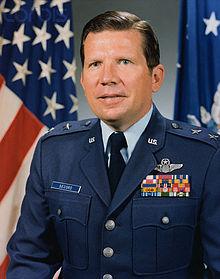
Richard Secord [Source: wikipedia.org] 
Harry “Heinie” Aderholt [Source: af.mil]
As capitalism was taking root in the Caucasus and Central Asia in the 1990s, ethnic conflict was also taking root. And the U.S. response was to throw oil onto the fire. Wherever violence emerged the U.S.—with their jihadis—made it worse.
In the early 1990s Azerbaijan itself was caught up in a vicious fight with Armenia in the disputed area of Nagorno-Karabakh—in which America’s covert jihadis fought for Azerbaijan.
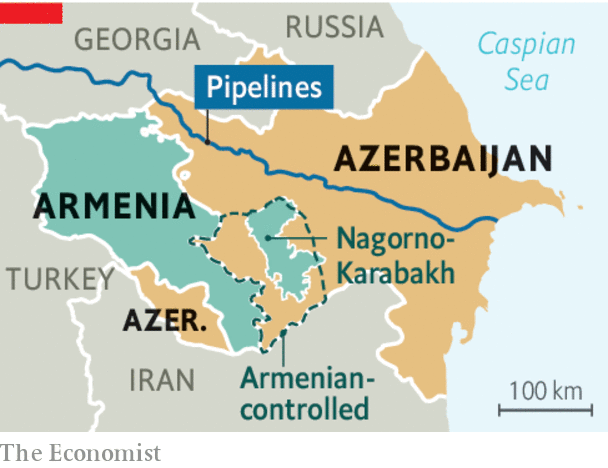
Jihadis were also to be found causing trouble—“to the delight of American oil companies”—in “the heart of Central Asia”—the Fergana Valley which links Uzbekistan, Tajikistan and Kyrgyzstan.[8]
And jihadis linked to Operation Cyclone were also fighting in Russia itself, in Chechnya and Dagestan, in the North Caucasus—a 1990s conflict which—conveniently for the American elite—hampered the flow of oil through this strategic part of Russia.[9]
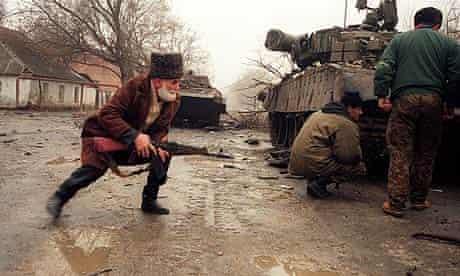
A published conversation (interview) between ex-CIA officer, Philip Giraldi, and the FBI whistleblower, Sibel Edmonds, throws even more light onto this CIA-Jihadi-Central Asian matrix:
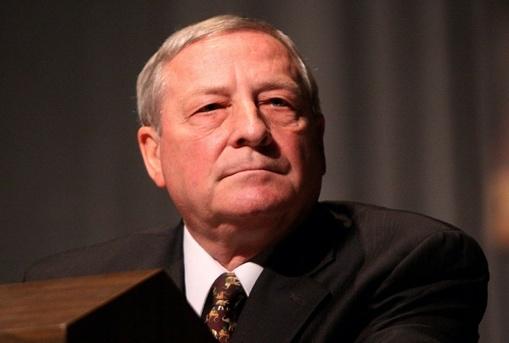
Philip Giraldi [Source: wikipedia.org] 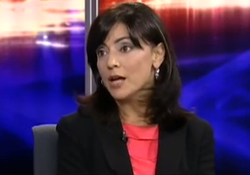
Sibel Edmonds [Source: wikipedia.org]
GIRALDI: You also have information on al-Qaeda, specifically al-Qaeda in Central Asia and Bosnia. You were privy to conversations that suggested the CIA was supporting al-Qaeda in central Asia and the Balkans, training people to get money, get weapons, and this contact continued until 9/11…
EDMONDS: I don’t know if it was CIA. There were certain forces in the U.S. government who worked with the Turkish paramilitary groups, including Abdullah Çatli’s group, Fethullah Gülen.
GIRALDI: Well, that could be either Joint Special Operations Command or CIA.
EDMONDS: Maybe in a lot of cases when they said State Department, they meant CIA?
GIRALDI: When they said State Department, they probably meant CIA.
EDMONDS: Okay. So these conversations, between 1997 and 2001, had to do with a Central Asia operation that involved bin Laden. Not once did anybody use the word “al-Qaeda.” It was always “mujahideen,” always “bin Laden” and, in fact, not “bin Laden” but “bin Ladens” plural. There were several bin Ladens who were going on private jets to Azerbaijan and Tajikistan. The Turkish ambassador in Azerbaijan worked with them.
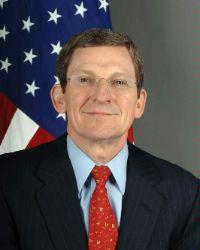
There were bin Ladens, with the help of Pakistanis or Saudis, under our management. Marc Grossman was leading it, 100 percent, bringing people from East Turkestan into Kyrgyzstan, from Kyrgyzstan to Azerbaijan, from Azerbaijan some of them were being channeled to Chechnya, some of them were being channeled to Bosnia. From Turkey, they were putting all these bin Ladens on NATO planes. People and weapons went one way, drugs came back.
GIRALDI: Was the U.S. government aware of this circular deal?
EDMONDS: 100 percent.[10]
Baku Coups
During this chaotic period, Baku was rocked in quick succession by two decisive coups which locked Azerbaijan into the U.S.-anti-Russian camp. And prepared the ground for the Azerbaijan-Georgia-Turkey pipeline (the BTC, Baku-Tbilisi-Ceyhan, pipeline)
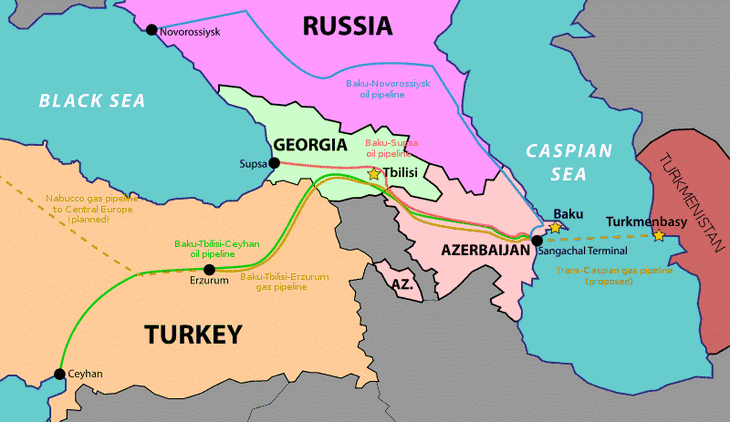
The first coup, in 1993, echoed the CIA’s 1953 coup in Iran. It involved the U.S. and the UK (the CIA and MI6) and the West’s oil companies, primarily BP—British Petroleum—working together to dislodge the Baku government of Abulfaz Elchibey.
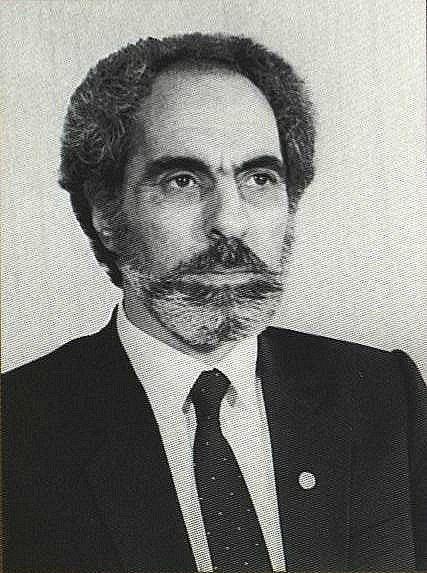
After the coup, Heydar Aliyev was in charge—a man then beholden to Western oil companies. In 1994, he signed the “contract of the century” with BP and its American partners Amoco, Unocal and Pennzoil.[11]
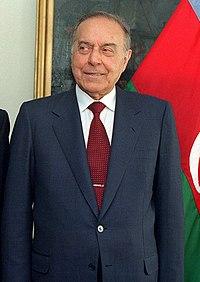
In case the new man, Aliyev, didn’t fully understand his new geopolitical role, another “coup” or “warning” shook Baku in 1995. This is known as the “Turkish coup” since it involved covert Turkish forces—linked to Baku casinos and drugs.[12]
The boss of Azerbaijan, Heydar Aliyev—a former KGB General and protégé of Soviet leader Leonid Brezhnev—survived but learned the lesson. So much so, that the Aliyev family continues to run Azerbaijan today—to the detriment of the Azeri people.
The New York Times reported on Heydar Aliyev’s death in 2003 that living standards had declined since the end of Soviet rule and that the average Azeri earned just $650 per year, with severe corruption and human rights abuses continuing under his son Ilham (President of Azerbaijan 2003-present).[13]
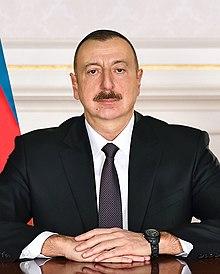
The ruthless “oil politics,” however, needed some official gloss. And the ever-present pair Zbigniew Brzezinski and Dick Cheney (and Henry Kissinger, among others) gave it that by being a part of the U.S.-Azerbaijan Chamber of Commerce (founded in 1995). The BTC pipeline was eventually built between 2003 and 2005.[14]
The Turkish Connection
America’s cynical use of Islam around the Caspian Sea, the importance of the BTC pipeline running west into Turkey and the nefarious “Turkish coup” in Baku all signaled one thing: the key role of Turkey in America’s plans for Central Asia—or to be more blunt—that Turkey was a U.S. proxy in Central Asia.
The hard anti-Russian politics the U.S. was promoting in Central Asia required a soft anti-Russian culture. And America’s NATO ally, Turkey, provided one. The Turkic-language family and Islam connected Turkey culturally to Central Asia. And when this registered in Washington—a back door into the region suddenly opened for U.S. imperialists.
In the 1990s, Washington decided to plant the “the pro-U.S. Turkish way” throughout the Turkic-speaking region. And to aid the cultivation they nourished a neo-Ottoman Turkey—a Turkey that embraced its Islam politically and one that looked east at Central Asia rather than west at Europe—a contradiction of Turkey’s secular “Atatürk” tradition.
One high-ranking CIA officer in particular is linked to this covert strategy: Graham Fuller—former vice chair of America’s National Intelligence Council and former CIA station chief in Ankara. As an Asian “expert” in the 1990s and 2000s, he argued that Turkey was a “pivotal Muslim state.”
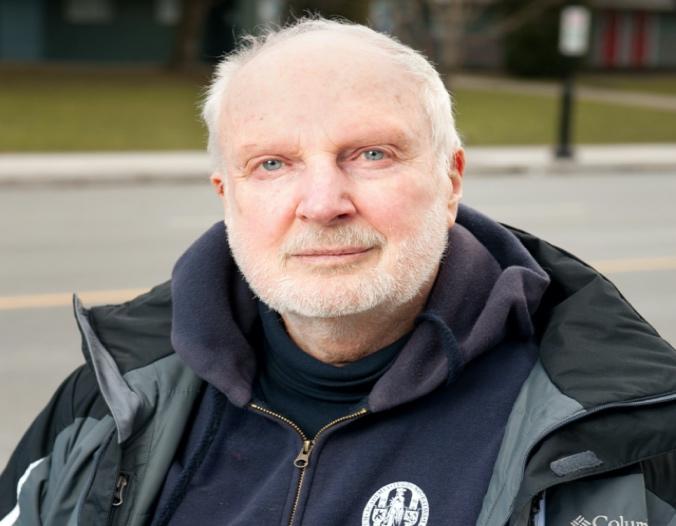
And fundamentally he was the link between the U.S. government and the “billionaire” Turkish imam who sought to realize this idea of Turkey as a “pivotal state” in Central Asia.
This devious use of Islam for geopolitical reasons is summed up in a quote credited to Fuller:
“The policy of guiding the evolution of Islam and helping them against our adversaries worked marvelously well in Afghanistan against the Red Army. The same doctrines can still be used to destabilize what remains of Russian power, and especially to counter the Chinese influence in Central Asia.”[15]
The “billionaire” Turkish imam who Graham Fuller (CIA) surreptitiously backed in the 1990s was Fethullah Gülen. This man acquired fame and fortune as Turkey’s Islamists became powerful in the 1980s and 1990s. Gülen’s influence was based on the elite schools he established. And the clandestine elite movement that formed around him. As he attained power, Gülen was conveniently portrayed as being “moderate” and “ecumenical”.

Gülen also was an adherent of Pan-Turkism—the idea of uniting all Turkic people. His elitism and the idea of uniting Turkey and Turkic Central Asia coincided with the CIA aim of making Turkey a geopolitical pivot.
In short: Gülen’s private school system, with CIA connivance, spread into Central Asia after the demise of the USSR.
This came to light in 2010 when “Osman Nuri Gündeş, a former senior [Turkish] intelligence official, wrote in a memoir that Gülen’s schools in Uzbekistan and Kyrgyzstan had sheltered as many as a hundred and thirty C.I.A. agents, posing as English teachers.”[16]
Supporting this claim is the fact that, when Fethullah Gülen was struggling to get a Green Card for the U.S. in the early 2000s (he entered America in 1999 and has not been back to Turkey since), top CIA figures gave him letters of recommendation (Graham Fuller and George Fidas).
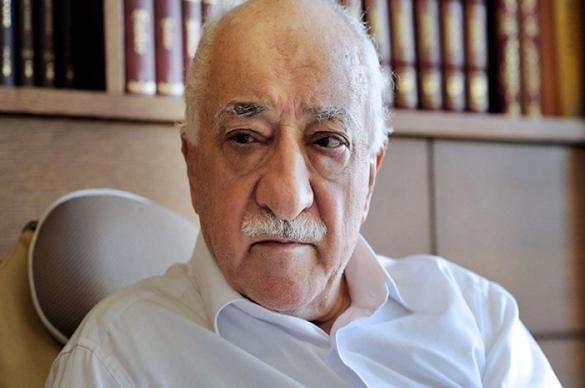
So too did a former U.S. ambassador to Turkey—and possible CIA man, Morton Abramowitz. Gülen obviously was not just a rich educator but was a valuable CIA asset.[17]
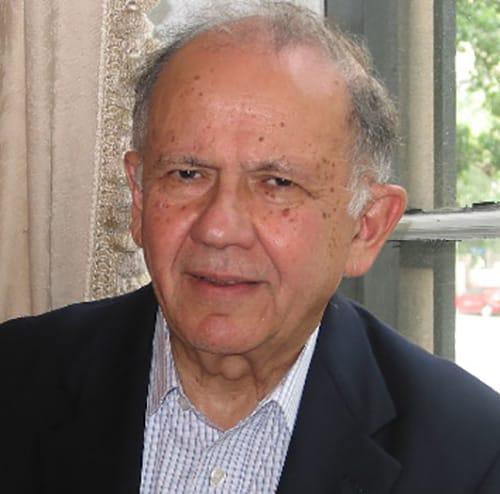
Georgia and George Soros
The U.S. turned to another billionaire “educator” to penetrate Georgia and flip it geopolitically: Wall Street tycoon George Soros.
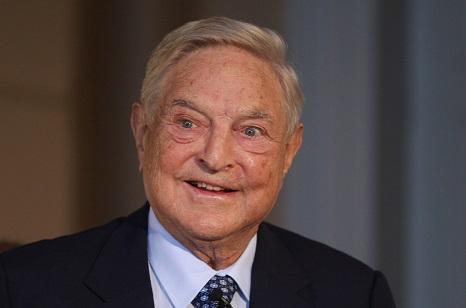
Georgia being Christian, rather than Muslim, needed a different approach to cement the politics of the BTC pipeline in Tbilisi and beyond. An obviously strong jihadi and Turkish presence in the country was out of the question—although the Pankisi Gorge in Georgia was being used by jihadis to penetrate Russia in the 1990s.
However, Georgia’s distinct “Western” identity was its soft spot and could be exploited by the U.S. And Soros had the money and the cover story to do it.
His cover story was “philanthropy” and “liberalism”—it was Atlanticism and Western integration. If—on behalf of the U.S.—Fethullah Gülen offered Central Asia Pan-Turkism, George Soros–on behalf of the U.S.—offered Georgia Pan-Westernism. And in the chaos of born-again capitalism, Georgia took the bait.
As Soviet socialism vanished in Georgia, a retrograde Georgian nationalism rushed in to fill the void and ignited ethnic conflicts between the “Georgians” and the “non-Georgians” inside Georgia. This mirrored the contemporaneous developments in neighboring Azerbaijan and Armenia.
And, like its neighbors, Georgia experienced violent clashes. In Georgia’s case the confrontations occurred in the areas of South Ossetia and Abkhazia. In 1992 Russia brokered a peace deal between Tbilisi and the breakaway regions. But it was a deal resented by the “Georgian nation.” Enter the U.S. and the BTC pipeline.
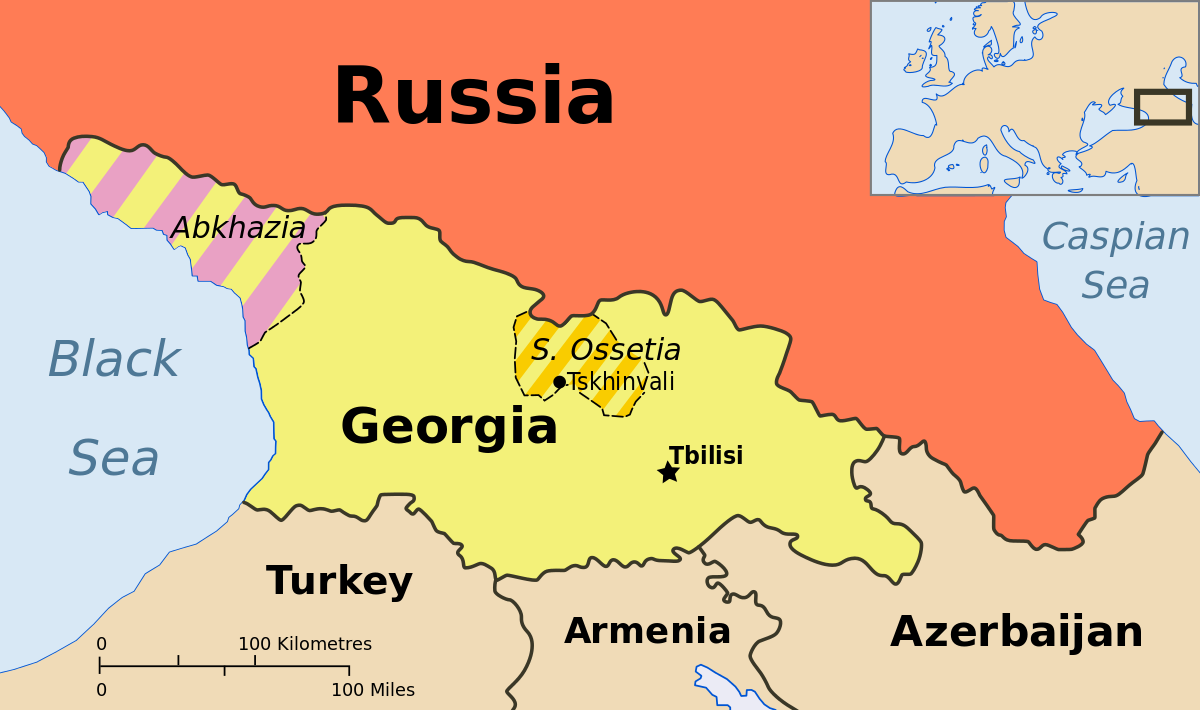
As Russia became Georgia’s bogeyman—because of “the peaceful ethnic deadlock”—the U.S. literally burrowed into Georgia’s soil and it’s “civil society.”
Covert U.S. policies since World War II have consistently targeted the world’s “civil societies” in an attempt to shape the politics of those “societies.”
The U.S. is always ready to seduce and use students, the media, religious groups, labor organizations and intellectuals throughout the world. And the role of billionaire “philanthropists” today—in this U.S. strategy—is to do the seducing.
Whereas before the 1980s the U.S. manipulation of civil societies was the secret job of the CIA, now it is openly conducted by U.S.-friendly “non-governmental organizations” (NGOs) or by CIA off-shoots, like the National Endowment for Democracy (NED).[18]

As a personification of corporate America, George Soros in foreign policy terms embodies the infamous “Powell Memo” (1971) which called for the political mobilization of the U.S. corporate sector.[19]
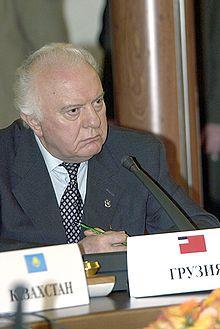
Knowing therefore what this corporate sector wanted in Georgia in 2003—a client state to manage the BTC pipeline—the money of Soros mobilized a “color revolution” in Tbilisi.
The target—Georgia’s president in 2003 Eduard Shevardnadze—was a senior figure in the old USSR (its Foreign Secretary) when it collapsed. Due to this past, Shevardnadze maintained strong ties to Moscow.
So in late 2003, when an American NGO questioned the election of Shevardnadze, “spontaneous” protests began on the streets of Tbilisi calling for annulment of the elections. Georgian “civil society” demanded an alternative result. And got it—in the figure of Mikheil Saakashvili—an American-educated thirty-something.
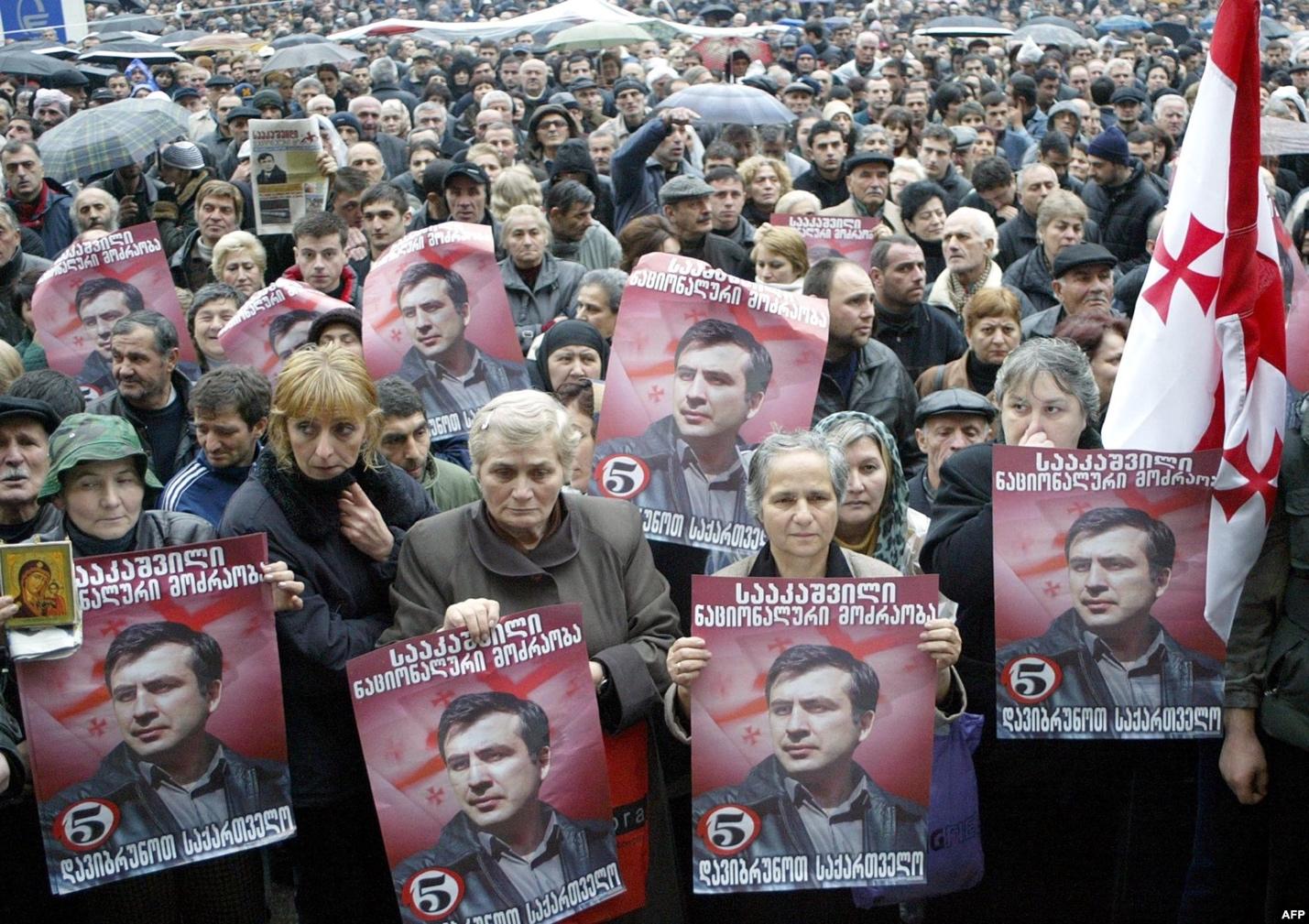
Almost immediately people in Tbilisi saw the fingerprints of Soros all over this “coup.”
“It’s generally accepted public opinion here that Mr. Soros is the person who planned Shevardnadze’s overthrow,” said Zaza Gachechiladze, editor-in-chief of The Georgian Messenger, an English-language daily based in the capital.[20]
Soros had paid for a Georgian (Giga Bokeria) to link up with the Serbians (Otpor) who had toppled the Serb leader Slobodan Milošević in 2000. Soros also gave “seed money” to the television station “Rustavi-2” which backed the “coup” non-stop and he gave $500,000 to the youth movement “Kmara,” which spearheaded the street campaign against Shevardnadze.[21]
Moreover, at the time of this Tbilisi coup (2003) Soros was a director of the Council on Foreign Relations – the New York / Wall Street based think tank which has been shaping U.S. foreign policy from behind the scenes since 1921.
And bizarre as it sounds, Shevardnadze was also a member of the Council on Foreign Relations, which might explain why he departed from the scene without a fight.
The end result was the opening of the BTC pipeline in 2006. And the naming of a major street in Tbilisi after the U.S. President—George W. Bush.
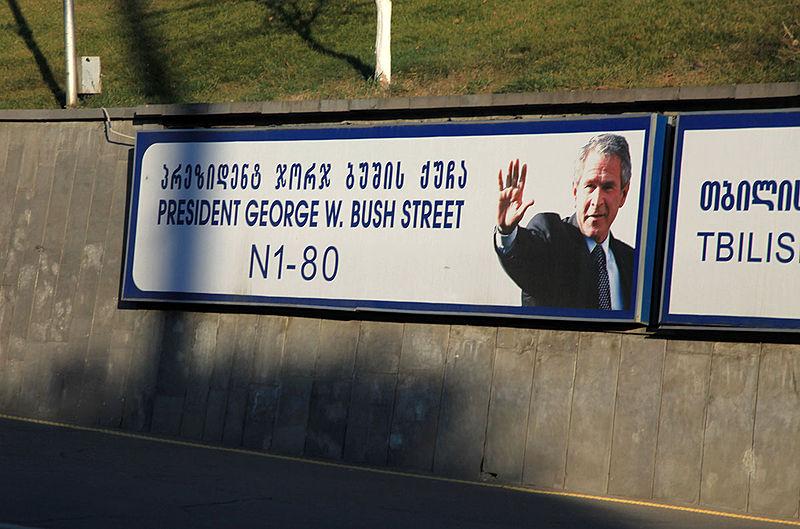
Narco-Imperialism
It is Central Asia’s misfortune to have Afghanistan as a neighbor. Because ever since Zbigniew Brzezinski started Operation Cyclone in 1979—Afghanistan has been a “heroin needle” stuck in its side. And this predicament only worsened after the U.S. invasion and occupation of Afghanistan in 2001.
For Brzezinski, the soft “Muslim” underbelly of the USSR (Central Asia) was the big target of his aggression.
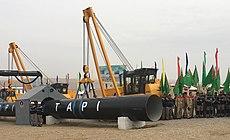
And for President George W., Central Asia was arguably his main target too: a pipeline running from Turkmenistan, through Afghanistan and on to South Asia was being planned in the U.S. during the 1990s. Bush’s war was a way to facilitate this other key “anti-Russian” pipeline.
Today, with the U.S. military withdrawn from Kabul, the Turkmenistan-Afghanistan-Pakistan-India pipeline (TAPI) is almost ready for use.[22]
However, in the background—and often in the foreground—of Operation Cyclone and the Bush War was and still is the aggressive production of heroin in Afghanistan and its distribution throughout Central Asia.

There is such a thing as narco-imperialism. Apologists for empire write about narco-terrorism or narco-nationalism or narco-statism while assiduously avoiding the reality of narco-imperialism.
The journalist Gary Webb did not avoid reality. Neither do authors Peter Dale Scott, Alfred W. McCoy and Douglas Valentine (Sibel Edmonds alludes to this reality too, in the above interview). They acknowledge the links between America’s wars, the CIA, America’s proxies, and narcotics. In fact—since its banks are addicted to drug money—the Empire’s desire for soporific drugs might even surpass its desire for oil.

Scott correctly points to “America’s overall responsibility for the huge increases in global drug trafficking since World War II.” And the link to America’s imperial wars is stark: “Afghan opium drug production since the U.S. invasion of 2001 merely replicates the massive drug increases in Burma, Thailand, and Laos between the late 1940s and the 1970s. These countries also only became major sources of supply in the international drug traffic as a result of CIA assistance … to what would otherwise have been only local traffickers.”[23]
These indisputable facts force Douglas Valentine to conclude that “The story of the CIA’s drug empire is the biggest cover-up in American history.”[24]
Central Asia is on the front line of this U.S. underworld. As a result, some of the world’s greatest drug-smuggling routes cross its vast landscapes.
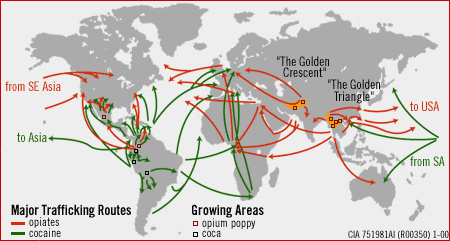
Exiting the north of Afghanistan is the “Badakhshan drug corridor” that protrudes into Tajikistan and Kyrgyzstan—its final destination being Russia. Then exiting the western areas of Afghanistan is the “Black Sea drug corridor” that hits Azerbaijan and Georgia—its final destination being Western Europe.
The consequences of this covert CIA trade are no mystery: “The proliferation of drugs is undermining Central Asian society. It is a blight on the economic and social environment and a threat to the traditional system of values. Drug addiction damages the physical, psychological, and emotional health of whole pockets of society, wreaking particular havoc on the younger generation. Central Asian society is at risk from drugs in a number of different ways. The flourishing drug trade in the region enables separatist, radical religious, and terrorist movements that have already sprung up in Central Asia to become financially self-sufficient.”[25]
There has already been a “drug coup” in Kyrgyzstan—the 2005 “Tulip Revolution.” The family which took control—“the Bakiyev family—“ran the country like a criminal syndicate.”[26]
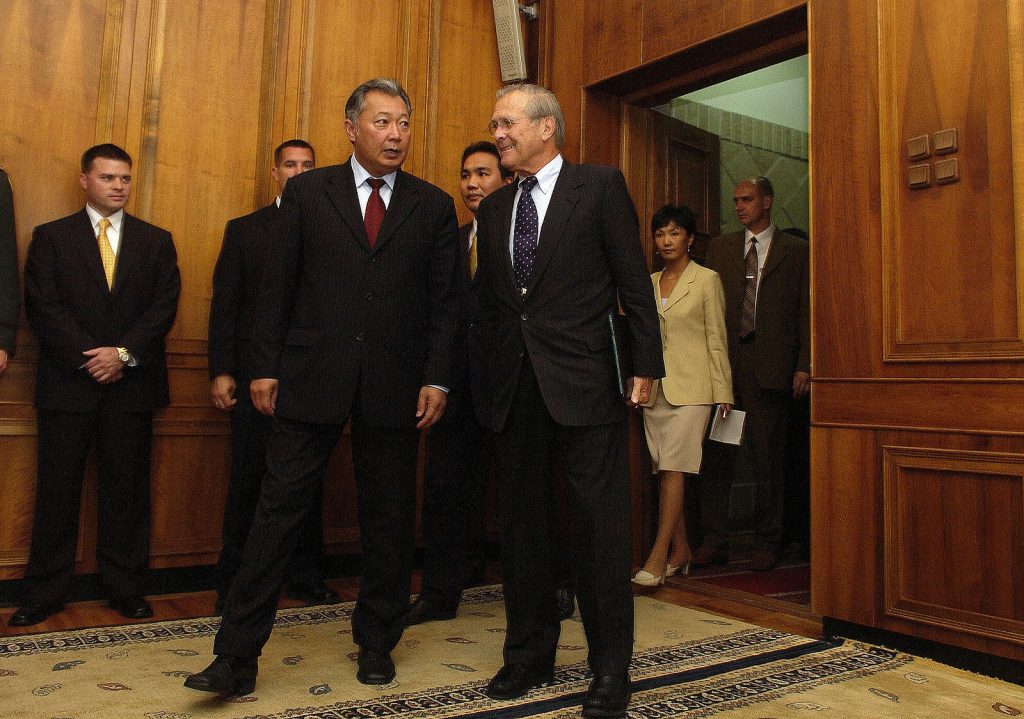
And like a rerun of the 2003 “Rose Revolution” in Georgia, this Kyrgyzstan “revolution” had the explicit support of America’s NGO network (“Freedom House,” etc.) and—once again—George Soros.
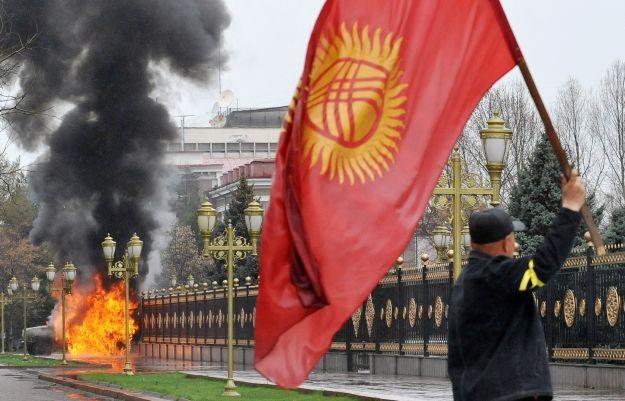
In 1997, Soros, with the backing of the U.S. government, had established a university in Bishkek, the capital of Kyrgyzstan—the “American University of Central Asia.”[27]
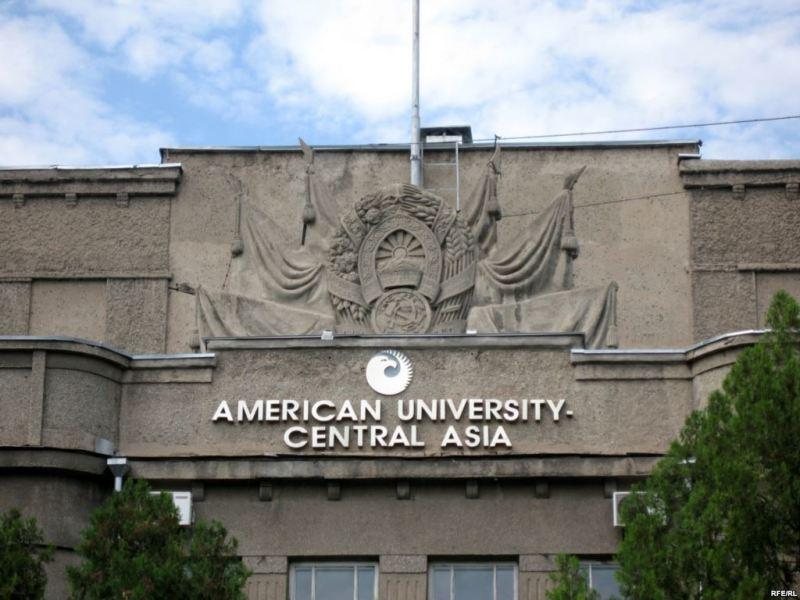
The 1995 so-called “Turkish coup” in Baku also had connections to the drug route emanating from Afghanistan. The Turkish hitman involved in that coup was the notorious Abdullah Çatli—a known drug trafficker—who had connections to the Turkish State and the U.S.[28]
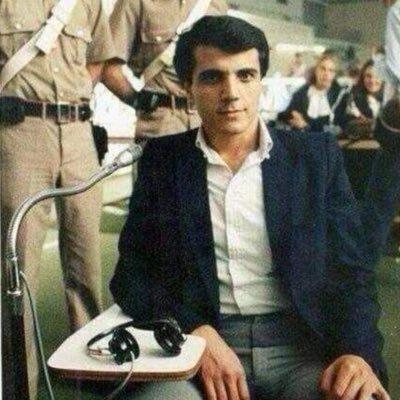
According to a Turkish mafia boss speaking out today on YouTube—Sedat Peker, Turkey’s Pan-Turkish expansionist agenda has been financed in part by drug smuggling, with criminal gangsters enjoying protection from the Turkish state.[29]
The Turkish/Afghan/CIA drug threat in the Central Asian region is so serious that Russia has, in recent years, accused the Americans of narco-aggression.[30] Those who try to expose the narco-aggression often end up in a body bag. CIA external operations are financed from these profits, with the charge that the Taliban were using the heroin trade to finance their operations being a fabrication and a form of misdirection.[31]
The Asian Pushback
At the end of his 1997 book The Grand Chessboard, Zbigniew Brzezinski concludes:
America must “maneuver and [manipulate] in order to prevent the emergence of a hostile coalition [in Eurasia]…. The most immediate task is to make certain that no … combination of states gains the capacity to expel the United States from Eurasia.”[32]
Today, almost 25 years after Brzezinski published these words, we can conclude that his worst fears have come true: A Eurasian coalition, a Eurasian combination of states, has in fact emerged that is successfully challenging the U.S. in the heartland of Eurasia—Central Asia.
Indigenous Eurasian institutions like the Shanghai Cooperation Organization (SCO—founded in 2001) and the Asian Infrastructure Investment Bank (AIIB—opened in 2016)—and indigenous Eurasian projects like the Belt and Road Initiative (BRI—announced in 2013) and the Convention on the Legal Status of the Caspian Sea (signed in 2018)—are unprecedented declarations of Eurasian cooperation and independence which automatically preclude American leadership and dominance.

Slowly but surely, after the disintegration of the USSR in 1991, Central Asia settled into a geopolitical path that followed reality rather than fantasy. Linking up with its dynamic Eurasian neighbors rather than with a remote American “chess player” was the only rational way.
It is true that the U.S. “chess player” did link up with Central Asia via pipelines in Azerbaijan, Georgia (BTC) and Turkmenistan (TAPI), and the U.S. did build the “George Soros University” in Kyrgyzstan—all as part of a design to isolate Russia and now, increasingly, China.
The U.S. influence overall was negative—it helped despoil the environment, empowered corrupt leaders, and led to the rise of fundamentalist Islam and the growth of organized crime and the heroin trade.
Despite the chaos of the 1990s, most of the region then was cognizant of America’s surreptitious behavior.
In 1996, Kazakhstan, Kyrgyzstan and Tajikistan joined with Russia and China to form the Shanghai Five Group—which evolved into the Shanghai Cooperation Organization.
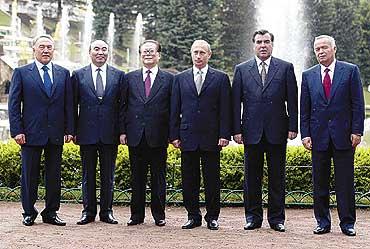
And in 2000, in Dushanbe, Kyrgyzstan, the Group explicitly rejected interference in the internal affairs of other countries “on the pretexts of humanitarianism and protecting human rights.”[33]
In 2001 the Shanghai Five became the Shanghai Six when Uzbekistan joined the Group. It also changed its name to the Shanghai Cooperation Organization (SCO).
When America asked for observer status within the SCO in 2005, it was refused.
In the same year the U.S. military was told to close its military base in Uzbekistan. In the context of Western wars in Afghanistan and Iraq, and “Western Color Revolutions” in Georgia and Kyrgyzstan, the SCO was adamant about the removal of the West from Central Asia. And within a few years (2014) the U.S. was forced to depart its military base in Kyrgyzstan.[34]
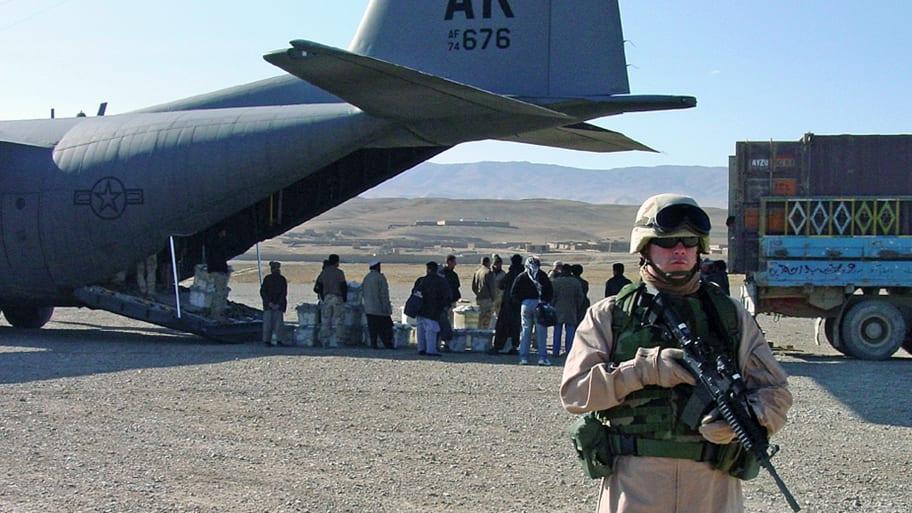
In 2017 India and Pakistan joined the SCO, making it the largest regional organization in the world—covering three-fifths of Eurasia and representing half of humanity. And the U.S. could only watch from a distance.
Out of this extraordinary political cooperation emerged the Chinese Belt and Road Initiative (BRI) in 2013—a game-changing economic vision for Eurasia. Significantly, China’s President Xi first mentioned the BRI when visiting Kazakhstan.
![Xi proposes a 'new Silk Road' with Central Asia[1]](https://covertactionmagazine.com/wp-content/uploads/2021/10/xi-proposes-a-and39new-silk-roadand39-with-central.jpeg)
In contrast to America’s pipelines, the Chinese BRI is offering Central Asia not just pipelines but roads, railways, special economic zones and digital connectivity.[35]
China’s idea of a “New Silk Road” across Central Asia wasn’t original. The Americans had a similar idea before China. The U.S. Secretary of State, Hillary Clinton, talked about a Silk Road running through Afghanistan and Central Asia in 2011. But the Americans were not serious; in 2013, the Chinese were.[36]
The Beijing-based Asian Infrastructure Investment Bank (AIIB) was created alongside the BRI and immediately gave Central Asia a financial alternative to the Washington-based International Monetary Fund and World Bank.[37]
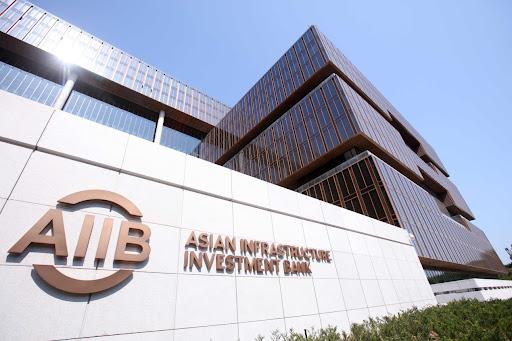
As a key player in these ground-breaking developments, Central Asia was at the forefront of the 21st century global economy. And all America could do was peddle drugs, Islamism, and anti-Russian (morphing into anti-Chinese) policies.
The Caspian Sea Treaty of 2018 was the final affront to the U.S. Empire. In the 1990s the Caspian looked like a U.S. playground—by 2018 the U.S. was persona non grata.
The 2018 Treaty united the five countries bordering the Caspian Sea—Russia, Kazakhstan, Turkmenistan, Iran and Azerbaijan.
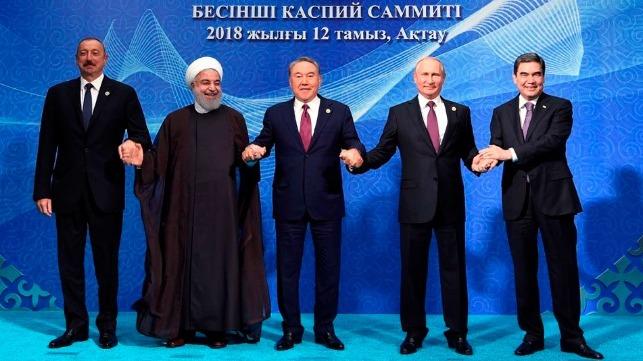
For the first time they agreed on a way to manage this sea/lake. However, the take-home message for the U.S. was that no other country, apart from the Caspian five, was allowed a military presence on the sea. The U.S. military was effectively banned from the Caspian.[38]
It was no coincidence then that, in 2018, America’s giant oil corporations—Chevron and Exxon Mobil—began to pull out from the Caspian Sea.[39]
America Does Not Rule the World
Today the U.S. Empire is on its back foot in Central Asia. After 30 years, the Pentagon barely has a foothold in the region.
The jihadis—in Baku, in the Ferghana Valley (Uzbekistan) and in the Pankisi Gorge (Georgia)—are silent or dead. And Fethullah Gülen and his CIA sponsor Graham Fuller are today wanted men in Turkey—after the failed 2016 coup in Ankara. Indeed, the cry now among Atlanticists is “who lost Turkey?”—which can be interpreted as—“who lost Central Asia?”[40]
George Soros has no more cover story in the region. He is what he is—a rabidly pro US / NATO operator. And everyone knows this. His “university” still functions in Kyrgyzstan. But that’s about it.
America’s only “victory” is Georgia. Tbilisi is a U.S. client but even that is under pressure from its disobedient regions: South Ossetia and Abkhazia. And when the U.S. encouraged Tbilisi to attack these autonomous areas in 2008, Russia—the peacekeeper—almost took Tbilisi in five days.[41]

In short, America is stuck in the South Caucasus and is not going further.
Azerbaijan is still in the U.S. orbit but the U.S. must rely on the unreliable Turkey to manage this vital link in the BTC pipeline—in 2020 Turkey decisively aided Azerbaijan in its ongoing conflict with Armenia—recall Turkey’s “drug and casino” interests in Baku.[42]
In fact, America’s only “hope” in Central Asia is the time bomb it planted on the edge of the region: Afghanistan. As the U.S. military pulls out of Kabul, it leaves behind the CIA, Islamism and heroin. Added to these toxic forces is once again the “criminal” Turkey, who wishes now to control Kabul’s airport.[43]
Afghanistan, therefore, continues to be America’s stalking horse. Behind the Afghan cut-out remains America’s covert ops. And they still point at Central Asia—as Brzezinski planned.
However, it is not 1979 or 1991. Today Central Asia is not on its knees. On the contrary, it is the key part of the 21st century Eurasian economy—the ultra-modern Silk Road that’s redefining the political world.
The Theory?
So what’s the lesson? Has America’s failure to dominate Central Asia in the last three decades proven the truth of Mackinder’s theory? If you can’t rule “the heartland,” you cannot rule “the world island”—is that it? Or maybe the lesson is that U.S. imperialism and Mackinder’s tantalizing theory belong to the 19th century. That’s it: American exceptionalism is out of date.

-
Excerpts from 1992 Draft “Defense Planning Guidance,” Frontline, https://www.pbs.org; Patrick E. Tyler, “U.S. Strategy Plan Calls for Insuring No Rivals Develop,” The New York Times, March 8, 1992. ↑
-
PNAC, Statement of Principles, June 3, 1997, https://www.rrojasdatabank.info ↑
-
Zbigniew Brzezinski, The Grand Chessboard: American Primacy and Its Geostrategic Imperatives (New York: Basic Books, 1997), 17. ↑
-
National Energy Policy, Report of the National Energy Policy Development Group, May 2001, https://www.wtrg.com ↑
-
Maureen S. Crandall, Energy, Economics & Politics in the Caspian Region: Dreams and Realities (Santa Barbara, CA: Greenwood Publishing Group, 2006), 11. ↑
-
The Brzezinski interview with Le Nouvelle Observateur (1998), translated from the French by William Blum and David M. Gibbs, The University of Arizona, https://www.dgibbs.faculty.Arizona.edu ↑
-
Nafeez Ahmed, “Our Terrorists,” New Internationalist, October 1, 2009, https://www.newint.org ↑
-
Parenti, Christian. “America’s Jihad: A History of Origins.” <i>Social Justice</i>, vol. 28, no. 3 (85), 2001, pp. 31–38. <i>JSTOR</i>, www.jstor.org/stable/29768089. Accessed August 14, 2021. ↑
-
See John Laughland, “The Chechens’ American friends,” The Guardian, September 8, 2004, https://www.theguardian.com ↑
-
See Philip Giraldi, “Who’s Afraid Of Sibel Edmonds?”, The American Conservative, November 1, 2009, https://www.theamericanconservative.com ↑
-
See Greg Palast, “Lap Dancers, the CIA, Payoffs and BP’s Deepwater Horizon,” Truthdig, April 18, 2014, https://www.truthdig.com ↑
-
Barry Rubin and Kemal Kirisci, Eds., Turkey in World Politics: An Emerging Multiregional Power (London: Lynne Rienner Publishers, 2001), 178; Hugh Pope, “Turkey Aided Death Squads, Prime Minister’s Probe Says,” Wall Street Journal, January 26, 1998, https://www.wsj.com ↑
-
Paul Lewis, “H.A. Aliyev, KGB Officer and Azeri Leader, 80, Dies,” The New York Times, December 13, 2003. ↑
-
Armen Georgian, “U.S. Eyes Caspian Oil in ‘War on Terror,’” Institute for Policy Studies, April 1, 2002, https://www.ips-dc.org ↑
-
Nafeez Ahmed, “Our Terrorists,” New Internationalist, October 1, 2009, https://www.newint.org ↑
-
“Is the CIA Infiltrating Central Asia Via Turkish Muslims?” Eurasianet, January 6, 2011, https://www.eurasianet.org ↑
-
See Ragip Soylu, “Gülen’s victims in media and military point fingers at US for its silence,” Daily Sabah, September 29, 2016, https://www.dailysabah.com ↑
-
See analysis, “National Endowment for Destabilization? CIA Funds for Latin America in 2018,” Telesur, April 4, 2019, https://www.telesurenglish.net; James Petras, “Imperialism and NGOs in Latin America”, Monthly Review, December 1, 1997, https://www.monthlyreview.org; Richard Miniter, “Are George Soros’ Billions Compromising U.S. Foreign Policy?” Forbes, September 9, 2011, https://www.forbes.com ↑
-
Mark Gruenberg, “The Powell Memo and The War on Workers,” United Steelworkers, August 22, 2016, https://www.usw.org ↑
-
See Mark MacKinnon, “Georgia revolt carried mark of Soros,” The Globe and Mail, November 26, 2003, https://www.theglobeandmail.com ↑
-
Ibid. ↑
-
Reuters Fact Check, “Fact check – U.S. has long supported natural gas pipeline in Afghanistan, predating Keystone XL cancellation,” Reuters, March 24, 2021, https://www.reuters.com ↑
-
See Peter Dale Scott, “Operation Paper: The United States and Drugs in Thailand and Burma,” The Asia-Pacific Journal, November 1, 2010, https://www.apjjf.org; Peter Dale Scott, “Kyrgyzstan, the U.S. and the Global Drug Problem: Deep Forces and the Syndrome of Coups, Drugs and Terror,” The Asia-Pacific Journal, July 12, 2010, https://www.apjjf.org ↑
-
See Douglas Valentine, “The CIA and Drugs, Inc.: a Covert History,” Counterpunch, November 7, 2014, https://www.counterpunch.org ↑
-
See Martha Brill Olcott and Natalia Udalova, “Drug Trafficking on the Great Silk Road: The Security Environment in Central Asia,” Carnegie Endowment for International Peace, March 11, 2000, https://www.carnegieendowment.org ↑
-
See Peter Dale Scott, “Kyrgyzstan, the U.S. and the Global Drug Problem: Deep Forces and the Syndrome of Coups, Drugs and Terror,” The Asia-Pacific Journal, July 12, 2010, https://apjjf.org/-Peter-Dale-Scott/3384/article.pdf. ↑
-
Scott, “Kyrgyzstan, the U.S. and the Global Drug Problem”; Andrea Peters, “U.S. money and personnel behind Kyrgyzstan’s ‘Tulip Revolution,’” World Socialist Web Site, March 28, 2005, https://www.wsws.org; John Kerry, “Secretary of State John Kerry Speech at AUCA (American University of Central Asia) Commemorative Ceremony (excerpts),” U.S. Embassy in The Kyrgyz Republic, October 31, 2015, https://www.kg.usembassy.gov ↑
-
Sibel Edmonds, Prison Planet Intelligence Agency Wiki, https://www.ppia.fandom.com ↑
-
See Deutsche Welle, “Turkish mafia scandal threatens Erdogan government,” May 21, 2021, https://www.dw.com ↑
-
See Sergei Blagov, “Moscow Accuses West of ‘Narco-Aggression,’” ETHzürich Center for Security Studies, https://www.ethz.ch ↑
-
Pepe Escobar, “Afghanistan and the CIA Heroin Ratline,” Global Research, August 29, 2017, https://www.globalresearch.ca ↑
-
Brzezinski, The Grand Chessboard, 269. ↑
-
See Bates Gill, “Shanghai Five: An Attempt to Counter U.S. Influence in Asia?” Brookings, May 4, 2001, https://www.brookings.edu ↑
-
See “SCO sends strong signals for West to leave Central Asia,” People’s Daily Online, July 8, 2005, https://www.en.people.cn; Joshua Kucera, “Shanghai Cooperation Organization Summiteers Take Shots at US Presence in Central Asia,” eurasianet.org, August 19, 2007, https://www.web.archive.org; Stewart M. Patrick, “The SCO at 10: Growing, but Not into a Giant,” Council on Foreign Relations, June 14, 2011, https://www.cfr.org ↑
-
There are thousands of articles about the significance of China’s BRI and how it dwarfs America’s plans for the world economy. Here’s just one. Jennifer Hillman and David Sacks, “How Should the United States Compete With China’s Belt and Road Initiative?” Council on Foreign Relations, March 23, 2021, https://www.cfr.org ↑
-
See Joshua Kucera, “The New Silk Road? The United States hopes that a combination of trade and infrastructure can help steer Afghanistan away from unrest – and Russia,” The Diplomat, November 11, 2011, https://www.thediplomat.com ↑
-
See Nikhil Kumar, “Outside, Looking In: The World Bank and IMF are no longer meeting developing countries’ needs,” The Daily Free Press, October 27, 2019, https://www.dailyfreepress.com ↑
-
See Arkady Dubnov, “What the New Status of the Caspian Will Change,” Carnegie Moscow Center, August 21, 2018, https://www.carnegie.ru ↑
-
See Dmitry Zhdannikov and Ron Bousso, “Exclusive: Exxon, Chevron seek to exit Azerbaijan’s oil after 25 years,” Reuters, December 4, 2018, https://www.reuters.com ↑
-
See Cihan Tuğal, “Turkey at the Crossroads?” New Left Review, Jan/Feb 2021, https://www.newleftreview.org ↑
-
See Timothy Heritage, “Georgia started war with Russia: EU backed report,” Reuters, September 30, 2009, https://www.reuters.com ↑
-
See Patrick Keddie, “What’s Turkey’s role in the Nagorno-Karabakh conflict?” Al Jazeera, October 30, 2020, https://www.aljazeera.com ↑
-
See Orhan Coskun, “Turkey Still Keen to Run Kabul Airport Despite Taliban Advance – Officials,” U.S. News & World Report, August 11, 2021, https://www.usnews.com ↑
CovertAction Magazine is made possible by subscriptions, orders and donations from readers like you.
Blow the Whistle on U.S. Imperialism
Click the whistle and donate
When you donate to CovertAction Magazine, you are supporting investigative journalism. Your contributions go directly to supporting the development, production, editing, and dissemination of the Magazine.
CovertAction Magazine does not receive corporate or government sponsorship. Yet, we hold a steadfast commitment to providing compensation for writers, editorial and technical support. Your support helps facilitate this compensation as well as increase the caliber of this work.
Please make a donation by clicking on the donate logo above and enter the amount and your credit or debit card information.
CovertAction Institute, Inc. (CAI) is a 501(c)(3) non-profit organization and your gift is tax-deductible for federal income purposes. CAI’s tax-exempt ID number is 87-2461683.
We sincerely thank you for your support.
Disclaimer: The contents of this article are the sole responsibility of the author(s). CovertAction Institute, Inc. (CAI), including its Board of Directors (BD), Editorial Board (EB), Advisory Board (AB), staff, volunteers and its projects (including CovertAction Magazine) are not responsible for any inaccurate or incorrect statement in this article. This article also does not necessarily represent the views the BD, the EB, the AB, staff, volunteers, or any members of its projects.
Differing viewpoints: CAM publishes articles with differing viewpoints in an effort to nurture vibrant debate and thoughtful critical analysis. Feel free to comment on the articles in the comment section and/or send your letters to the Editors, which we will publish in the Letters column.
Copyrighted Material: This web site may contain copyrighted material the use of which has not always been specifically authorized by the copyright owner. As a not-for-profit charitable organization incorporated in the State of New York, we are making such material available in an effort to advance the understanding of humanity’s problems and hopefully to help find solutions for those problems. We believe this constitutes a ‘fair use’ of any such copyrighted material as provided for in section 107 of the US Copyright Law. You can read more about ‘fair use’ and US Copyright Law at the Legal Information Institute of Cornell Law School.
Republishing: CovertAction Magazine (CAM) grants permission to cross-post CAM articles on not-for-profit community internet sites as long as the source is acknowledged together with a hyperlink to the original CovertAction Magazine article. Also, kindly let us know at info@CovertActionMagazine.com. For publication of CAM articles in print or other forms including commercial internet sites, contact: info@CovertActionMagazine.com.
By using this site, you agree to these terms above.
About the Author
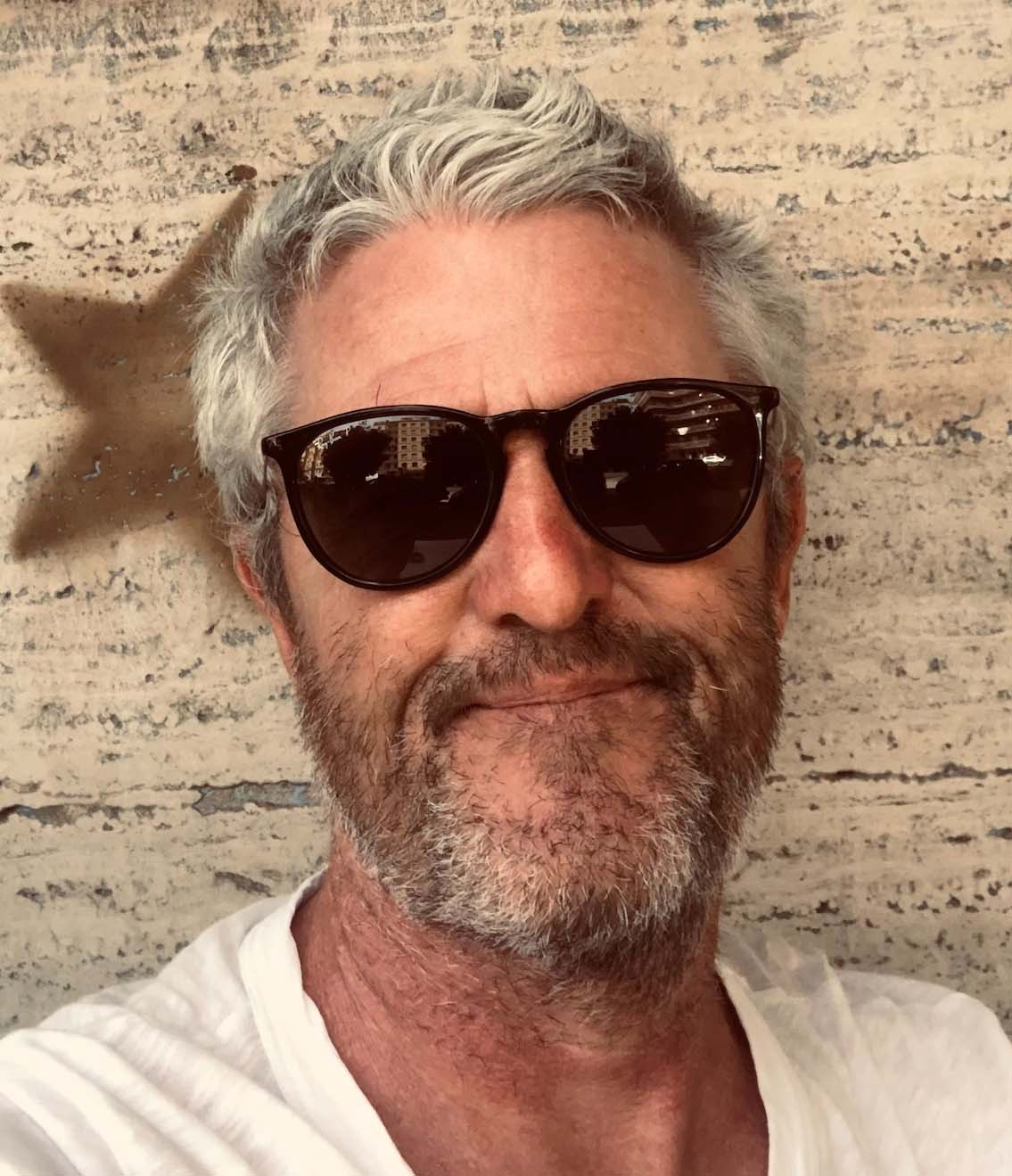
Aidan O’Brien is a hospital worker in Dublin, Ireland.
Aidan can be reached at: ado1968@hotmail.com.


Washington’s Grand Strategy of destabilizing regions to prevent rise of competition is not limited to Central Asia. The destruction of Yugoslavia was orchestrated by Washington to destabilize Europe. The Ukraine Coup of 2014 is also intended to cause chaos in Europe. A divided Europe is a weak Europe.
Of course, I understand very well what Aidan O’Brien says and his analysis is correct, if we view things from the outside, from what appears to be. However, my perspective is different due to what I call my “inside” experience. Seven years in Geneva, Switzerland, in regular contact with UN diplomats, politicians and military negotiators. This was followed by several decades of world travelling due to my work as a concert pianist, when I had many opportunities to attend official/political/diplomatic events. I can guarantee, the UN ‘permanent’ Security Council is formed by five countries very friendly with each other: USA, UK, Russia, France and China.
The dozen or so countries invited for a year or two into the secret world of this UN cabal or Security Council, are the countries that cooperate with the ‘5 friends’ in keeping the world divided (in Left and Right, or Communism versus Capitalism and each of those blocks sub-divided in different degrees of each of the main bands.
To this effect, not only they meet regularly, almost daily, at the United Nations buildings in New York and Geneva, but spend fortunes in Embassies in each other’s country. Each Embassy with their own Trade (or Commercial), Military and Press Attachés. Nothing is ‘left to chance’. Together, they decide what happens to the planet. Their different ‘styles’ confuse the world. America has a candid, open, direct style and this makes the country appear more ambitious. Chinese culture is very different; basically, the Chinese have ways of saying things without saying them.
Basically, in order to play politicians’ favourite sport – War – they have to first play politicians’ favourite game – Enemy – to justify the obscene fortunes they spend on destroying lives, families, buildings, nature and economies (whilst making good money for themselves). The Game has two teams: on one side USA and UK, the other side kicked by Russia and China, with the arbiter France.
Things will only change the day we can educate humanity to say “ENOUGH IS ENOUGH!!!!!” and demand the Universal Abolition of Militarism. Not only ‘demand’ it but making it a reality.
[…] How the U.S. Lost the “Great Game” in Central Asia, by Aidan O’Brien […]